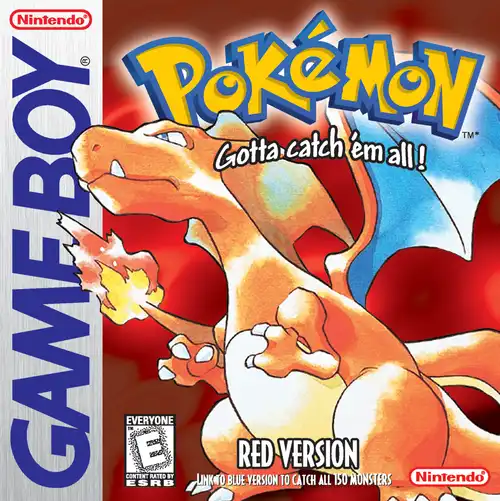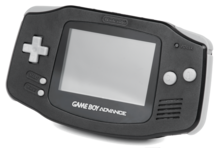Stepping out of your bedroom in Pallet Town for the very first time. The 8-bit chimes of the theme music hitting your ears. Professor Oak waiting patiently. For many of us, this was the moment our journey with Pokémon began, specifically with Pokémon Red Version on the Nintendo Game Boy. It wasn't just a game; it was a phenomenon that defined a generation of handheld gaming and sparked a global obsession.
But what was it about this seemingly simple classic RPG that made it so enduring? Let's take a trip back to 1998 (for us in the West) and revisit the magic of the original Kanto adventure.
The Kanto Journey Begins
The premise was straightforward: as a young trainer in the Kanto region, you receive your first Pokémon from Professor Oak, battle your rival Blue, and embark on a quest to collect eight Gym Badges, challenge the Elite Four, and ultimately, become the Pokémon Champion. Along the way, you'd encounter the nefarious Team Rocket and, of course, aim to catch all 150 (or was it 151?) unique creatures.
This simple structure was incredibly effective. It provided clear goals while allowing for immense exploration and discovery. Every new route, cave, or town felt like an adventure waiting to unfold.
More Than Just Catching 'Em All
While the tagline was "Gotta Catch 'Em All," the core gameplay of Pokémon Red Version offered surprising depth:
- Turn-Based Battles: Strategic combat relied on understanding type matchups (Water beats Fire, Grass beats Water, etc.), status effects, and move sets. Every battle, whether against a wild Pidgey or a Gym Leader's ace, felt meaningful.
- Evolution: Watching your humble starter or a newly caught Pidgey evolve into something bigger and stronger was incredibly rewarding.
- Exploration: Using HMs like Cut, Surf, and Strength opened up new paths, encouraging backtracking and rewarding curiosity.
- Trading and Battling: The social aspect, linking up with friends via a Game Link Cable to trade Pokémon and battle, was revolutionary and fostered a real-world community around the game.
The Iconic Starters
Choosing your first Pokémon was arguably the most crucial decision in Pokémon Red Version. Each had its pros and cons against early Gym Leaders, leading to playground debates that lasted for years:
- Bulbasaur: The Grass/Poison type, often considered the easiest start due to advantages against the first two Gyms (Brock and Misty).
- Charmander: The Fire-type, a challenging start against Brock but eventually evolving into the powerful Charizard, a fan favorite.
- Squirtle: The Water-type, a solid choice with an advantage against Brock and good matchups later on.
Your choice shaped your initial journey and created an immediate bond with your pixelated partner.
Why Red Version Stood Out
While released alongside Blue (and later Yellow), Pokémon Red Version held its own identity. The primary difference lay in the exclusive Pokémon available in each version. To truly "Catch 'Em All," trading was essential, a clever mechanic that boosted the game's longevity and social appeal. Red featured exclusives like Ekans, Oddish, Mankey, Growlithe, Scyther, and Electabuzz, making it a necessary companion to Blue.
Its impact was undeniable. It revitalized the Game Boy, spawned an anime, a trading card game, movies, and a multimedia franchise that continues to thrive today. It wasn't just a hit; it was a cultural reset for gaming.
Revisiting Pallet Town Today
Feeling that pang of nostalgia? Thankfully, the world of Pokémon Red Version isn't locked away in the past. While finding an original Game Boy and cartridge is the purist's route, there are modern ways to experience the magic:
- Virtual Console: Nintendo released the original Red (and Blue/Yellow) on the 3DS Virtual Console, offering a legitimate digital way to play, including wireless trading and battling.
- Remakes: The Kanto story has been revisited in remakes like FireRed and LeafGreen (Game Boy Advance) and Let's Go, Pikachu! and Let's Go, Eevee! (Nintendo Switch), offering updated graphics and gameplay while retaining the core narrative.
- Emulation: Various emulators exist for different platforms, allowing fans to play the original ROMs (note: legality varies depending on ownership of the original cartridge).
Whether you play the original pixels or a modern reimagining, the core adventure of becoming a Pokémon Master in Kanto remains as compelling as ever.
The Legacy of Pokémon Red
Pokémon Red Version wasn't just a game; it was a gateway. It introduced millions to the world of RPGs, strategic combat, and the thrill of collecting. It built communities around link cables and trading cards. Its charming pixel art, memorable music, and compelling loop created a timeless experience that continues to influence games and entertain new generations.
It's more than just nostalgia; it's a testament to brilliant game design that captured lightning in a bottle and started a global phenomenon. So, dig out that old Game Boy, fire up an emulator, or grab a remake – the Kanto region is waiting.
FAQ
What is the difference between Pokémon Red and Blue Versions?
The main difference is the set of exclusive Pokémon available in each game, encouraging players to trade to complete their Pokédex. Some minor graphical and dialogue differences also exist.
How many Pokémon were originally in Pokémon Red Version?
There were 150 Pokémon obtainable within the game itself, with the mythical Pokémon Mew being the 151st, often obtained through special events or glitches.
Can I still play Pokémon Red Version today?
Yes! You can play the original on a Game Boy, via the Virtual Console on Nintendo 3DS (if you previously downloaded it), or through remakes like FireRed/LeafGreen (GBA) or Let's Go, Pikachu!/Let's Go, Eevee! (Switch). Emulation is also an option for playing the original ROM.


